SATURDAY – WEDNESDAY 9 AM – 1 PM & 5 PM – 10 PM
FRIDAY 5 PM – 10 PM
THURSDAY – Weekly Off
SATURDAY – WEDNESDAY 9 AM – 1 PM & 5 PM – 10 PM
FRIDAY 5 PM – 10 PM
THURSDAY – Weekly Off
Dentistry is our profession; people are our focus.

EARLY APPROACH FOR BETTER RESULTS!
While many children start their orthodontic treatment between the ages of 12 and 14, some others can benefit from much earlier treatment. In case it’s needed, your orthodontist can advise you the best time a treatment can be started. Early orthodontic treatment, which is conducted during the primary (baby) dentition or mixed dentition, is described as Interceptive Orthodontics or Phase l.
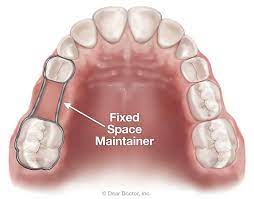
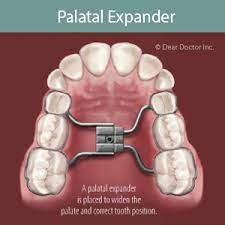
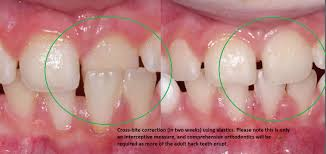
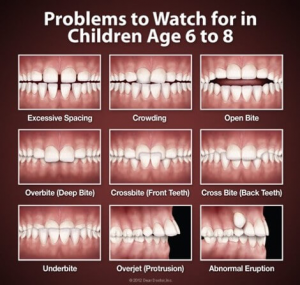
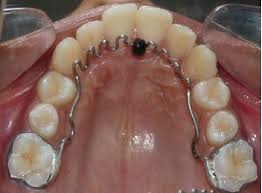
It can help your orthodontist to:
• Improve jaw growth
• reduce the risk of trauma to excessively protruded front teeth
• Correct harmful oral habits
• Improve oral functions
• Guide the eruption of permanent teeth
• Improve appearance and self-esteem
Parents can be the first to know:
At an early age, it may not be easy to identify when your child has an orthodontic problem. Even teeth looking straight can be hiding an unbalanced bite.
Below are some signs that may point out the need for orthodontic intervention:
• Early or late loss of primary teeth
• Crowded, misplaced or blocked-out teeth
• Excessively spaced and protruding teeth
• Mouth breathing
• Thumb-sucking
• Tongue thrust
• Jaws that are too far forward or back
• Biting the cheek or biting into the palate
• Upper and lower teeth that don’t meet, or meet in an abnormal way
• Lips not closing in rest position
• Unbalanced profile and facial appearance
• Difficulty in chewing or biting
• Grinding or clenching of the teeth
Offer your child the lifetime gift of a healthy smile
Early management of orthodontic problems can help children to speak, chew and bite better and it will make them also feel more confident. Poorly aligned teeth and unbalanced bite can lead to dental and, even, psychological problems.
Timing Matters
Not everyone needs orthodontic treatment. But if your child does need help, a checkup no later than age 7 will help your orthodontist provide the most appropriate treatment at the most appropriate time.
The American Association of Orthodontists (AAO) recommends that a child get a check-up with an orthodontist at the first recognition of the existence of an orthodontic problem, but no later than age 7. By then, the child has enough permanent teeth to determine whether an orthodontic problem exists or is developing. Waiting until the replacement of all baby teeth could be, sometimes, wrong and lead to more complications. Some orthodontic problems may be easier to solve when detected early. A check-up no later than age 7 gives your orthodontist the opportunity to recommend the appropriate treatment at the appropriate time. If early treatment is in order, the orthodontist may be able to achieve results that may not be possible once the face and jaws have finished growing.
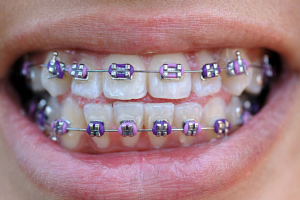
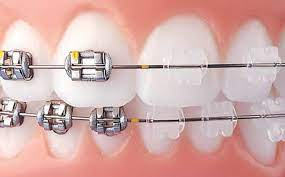
Crowded teeth, sparsely spaced, extra teeth, big teeth and small jaws, are all problems that will cause bad bite or malocclusion when the upper and lower jaws don’t meet harmoniously. This is when traditional orthodontic treatments are necessary to reverse the progression and restore bite and smile. A misaligned row of teeth causes risks of decay for teeth are tightly packed, puts pressure on the TMJ joint, leads to displeasing appearance and low self-esteem.
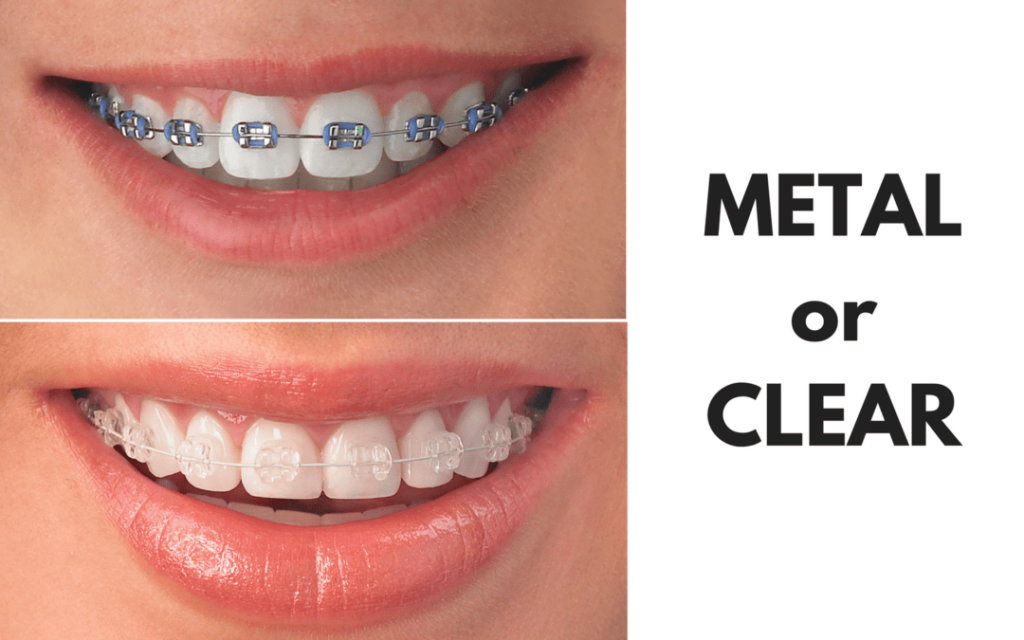
Most cases are completed in 12-18 months, but it ultimately depends on the extent of your tooth alignment needs, individual situation and age. The earlier the treatment starts the shorter the treatment plan may be, however if the severity of the condition is severe it may take up to two years for best results. The treatment period also depends on the type of braces you select.
Today, you have the option to choose between metal and ceramic braces. You can either choose either traditional metal braces or a more cosmetic ceramic clear braces style. Both work similar to one another, but one is more subtle and blends in with your smile. Ultimately it depends on your preferences as to which one you choose.
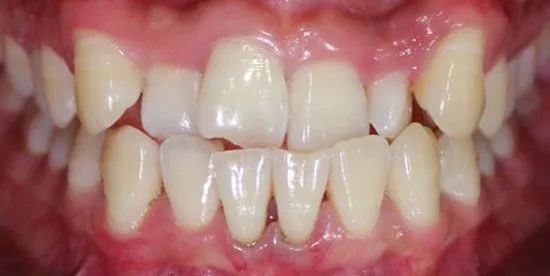
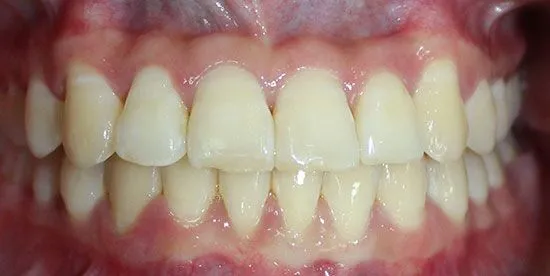
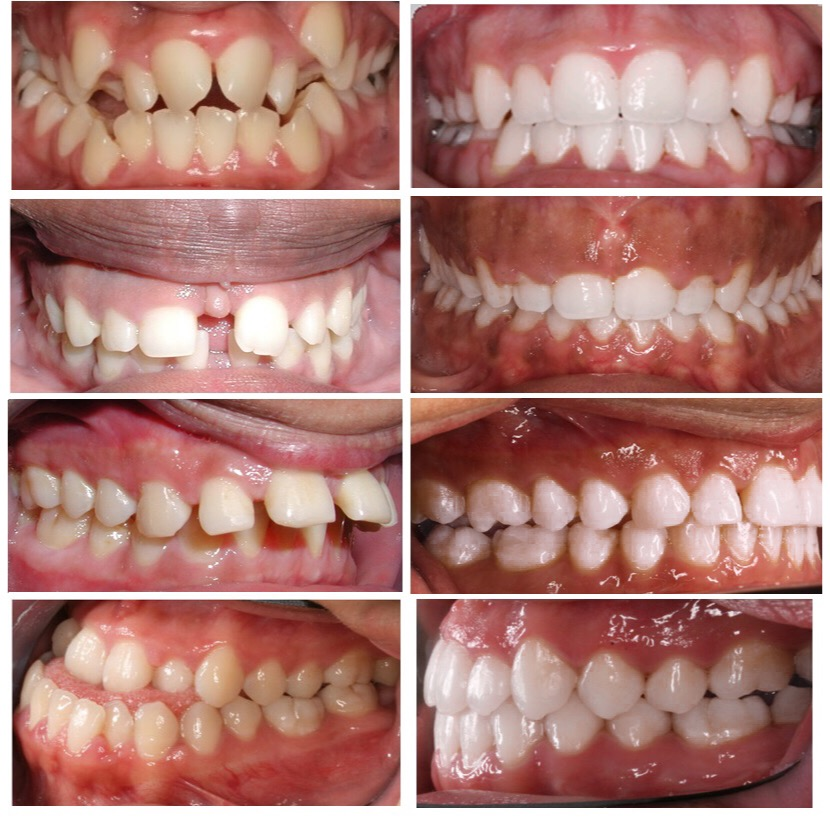
Is Orthodontic Treatment Right for Me?
Rousso Medical Center provides comprehensive orthodontic assessments for children, teens, and adults of all ages. If your oral health and function would benefit from a better aligned smile, we can recommend the best type of teeth straightening method for your age and lifestyle. Between metal brackets/braces and invisible braces, we have something for everyone.
Investing in traditional braces (metallic appliances) is a proven, straightforward way to straighten even the most crowded or misaligned teeth. Aligning your smile with normal braces can lower your risk of premature tooth wear, cavities, gum disease, and TMJ disorder. We encourage you to reserve a hassle-free orthodontic screening to learn whether or not metal braces, ceramic braces, or another type of treatment is right for you. Screenings begin as young as age 7.
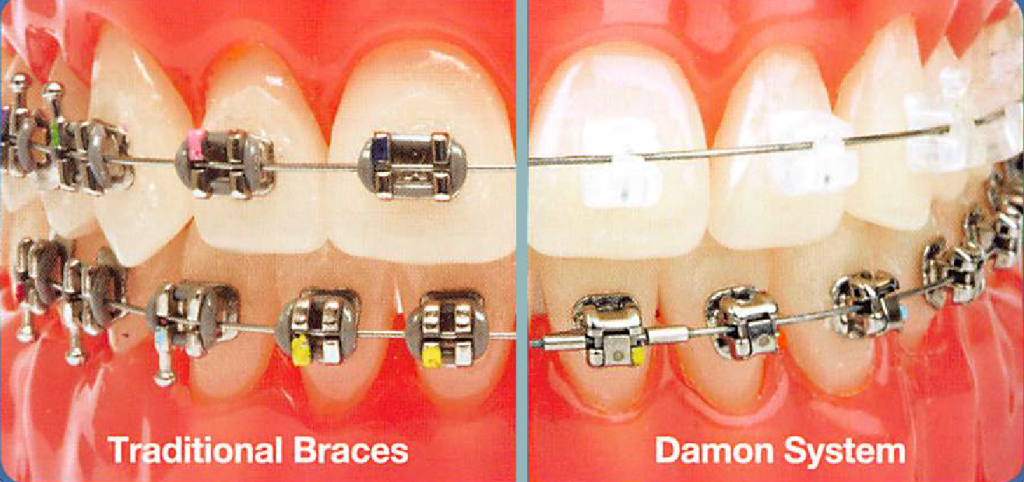
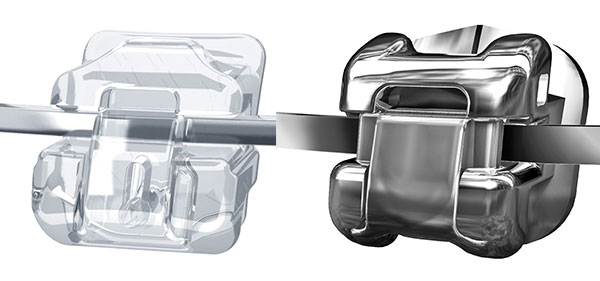
A Faster, More Comfortable Alternative to Traditional Braces
Damon Braces and traditional braces both have the same goal – to straighten teeth using orthodontics. While traditional braces use elastics to hold the wire in place, this creates friction and added discomfort, Damon Braces use a self-ligating system, which is a sliding mechanism that makes the movement of teeth more gradual and natural. Once the arch wire is snapped into the small trap door, it can glide freely underneath it.
Benefits of Damon Braces:

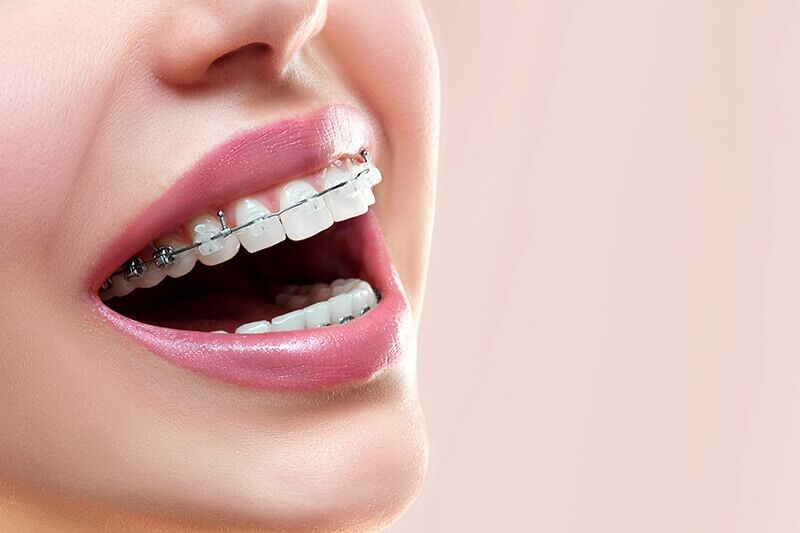
Ceramic Damon Braces
Ceramic braces have a similar color to tooth enamel, so they’re less noticeable when you’re talking or smiling.
Choosing the Best Orthodontic/Braces Line
Rousso Medical Center offers a wide range of self-ligating, ceramic braces, aligners, and other types of orthodontic designs to choose from. If you’re considering Damon system braces, our Orthodontists will help you weigh the pros and cons of the various types of braces you qualify for. That way you can make an educated decision about whether self-ligating ceramic braces are right for you.
What to Expect During Damon Braces Treatment?
Wearing Damon Braces is a lot like having traditional braces. You’ll visit orthodontist every 6-8 weeks to have your Damon clear braces arch wire changed out (to progress your tooth movement) and to ensure that your teeth are responding properly. On a daily basis, you’ll want to be sure to clean around your braces with appropriate brushes or flossing tools to avoid stains and food accumulation. Keep in mind that if you choose ceramic braces, you’ll want to avoid dark foods or liquids that might otherwise cause stain to form around them. Rinsing with water throughout the day or drinking through a straw can limit unnecessary stain buildup.
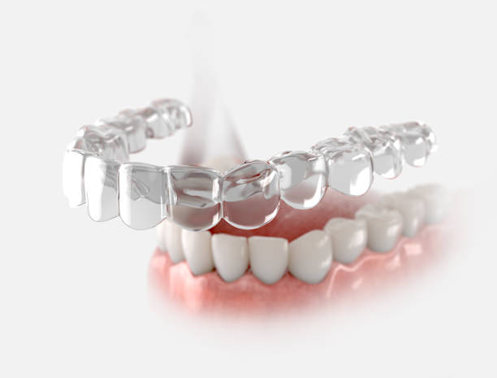
Our clear Aligners are the most preferred orthodontic treatments by adults – these clear aligners are completely invisible and each treatment uses 3D technology to make each set of aligners customized to every individual user. This 3D technology is used to create simulations of the treatment over the course of the treatment and therefore the user enjoys complete confidence in what the end result would look like. Clear aligners can correct a range of orthodontic issues such as misalignment, underbites, overbites, open bites, crossbites, gaps and over crowding.This is done by applying controlled and gentle pressure on the teeth over a long period of time.
Advantages of clear aligners.
Here are why adults prefer clear aligners over other orthodontic options
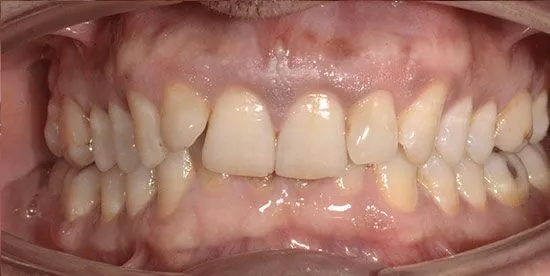
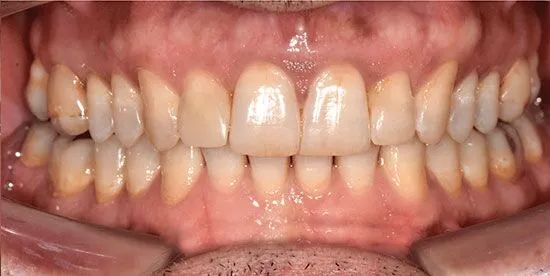
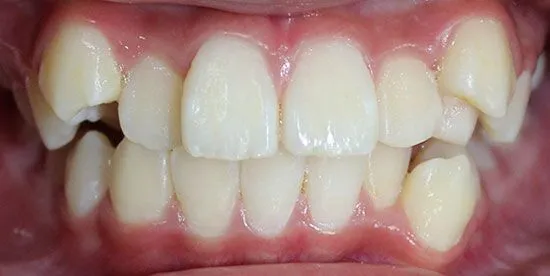
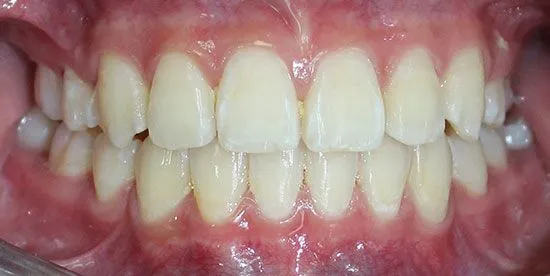
How does the process work?
How to know if you are the right candidate for clear aligners?
Generally Clear Aligners are a perfect option for those people who need minimal corrections and have moderate to mid crowding. A major factor is how frequently a user wears the aligners – the more the aligners are worn the better and faster it will work. Our orthodontists will recommend wearing the clear aligners for 20 plus hours a day and to remove it when eating and brushing your teeth or when cleaning the aligners.
How many months will you need to wear the clear aligners?
The duration of the treatment depends on the teeth’s current condition. On average, however, it can take up to one year to get perfectly straight teeth.
Is it painful to wear clear aligners?
Clear Aligners are not painful at all. There is however some mild discomfort which is due to the pressure being applied on your teeth. Clear Aligners are by far the least discomforting option when it comes to straightening teeth.
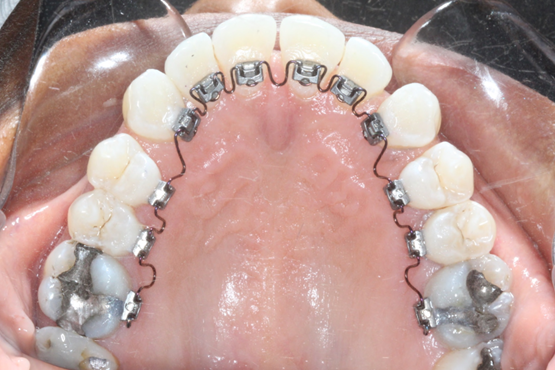
The secret path to transform your great smile with lingual braces
When you want the most invisible braces possible, lingual braces are an excellent choice. Lingual braces are a special type of dental braces that are bonded to the back (lingual) surfaces of your teeth, as opposed to the types of appliances that are visible when you smile.
How we make?
The latest advancements in dental technology, such as Computer-Aided Design and Computer-Aided Manufacturing (CAD/CAM), was able to bring Lingual Orthodontics to a higher level. The treatment end result can be planned and visualized in advance and the lingual appliances, both the braces and the wires, can be customized and manufactured accordingly.
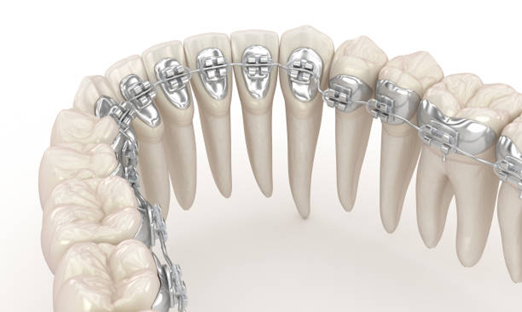
This technology includes:
– High-definition scanners to reproduce the patient’s dental anatomy.
– 3D software to simulate the orthodontic treatment and to design the appliance.
– 3D printer to produce the customized attachments.
– Wire bending robot to produce the customized arch wires.
– The production of the appliance takes around 4 weeks. Once received, it will be fixed to the patient’s teeth and full instructions will be given regarding the precautions to be taken during the treatment.
It allows to produce perfectly adapted attachments to the tooth surface minimizing the risks of debonding. The reduced size of the lingual braces improves the patient’s adaptation while maintaining the best movement control. The customized arch wires achieve fast and accurate finishing.
During the consultation, patients are given clear explanation about their case and the required treatment. They can even see on plastic model the details of the appliance.
How does it Work?
Lingual braces work almost identical to traditional dental braces. Instead of these dental braces being bonded to the facial (visible) side of your teeth, they’re on the opposite (lingual) side next to your tongue. There is still an individual bracket on each tooth with a fixed arch wire following the curve of your smile. Your misaligned teeth are nudged by the shape of the curved arch wire, gradually moving into proper alignment with their neighbors. Plan to visit for a brief assessment once every 6-8 weeks to ensure your teeth are responding properly and to adjust any of your appliances if needed.
Maintenance After Treatment
As with other types of traditional and invisible braces, lingual braces will require some type of maintenance protocol after your treatment is complete. We will fit you with discreet retainers to wear while you’re sleeping or during the day (if needed) to prevent tooth relapse. Your retainers are a long-term investment in your smile, ensuring you get to enjoy the perks of having straighter teeth for years to come.
Candidates for Lingual Braces
One of the biggest criteria for lingual braces is your dedication to oral hygiene and home care. Since appliances on the back of your teeth tend to be more challenging to clean, your daily habits and commitment to brushing and flossing will determine if they are a good option or not. We highly recommend investing in an electric toothbrush and water flosser, to make your daily home care more effective. Additionally, lingual braces are only recommended if your teeth and gums are healthy. If you have active decay or gum disease, those issues will need to be addressed first.
What are the pros and cons of lingual braces?
Advantages
Lingual braces are virtually invisible.
They effectively correct most bite problems.
They can be customized to increase your comfort and maximize their efficiency.
Disadvantages
Lingual braces may be more expensive than other types of braces.
They can cause considerable discomfort, especially at first.
They can give you a temporary lisp.
They may take longer than conventional braces.
Adjusting to Lingual braces does take a bit more time than other types of orthodontic systems.
Preserving Your Perfect Smile: The Power of Retainers
Retainers play a crucial role in preserving the outcomes of your orthodontic treatment. After your braces are removed, your teeth may shift back to their original positions, which is known as orthodontic relapse. After braces removal, teeth can drift to its original positions. To keep the smile in line, we need to use teeth retainer like- Essix retainer, Hawley retainer and fixed retainer.
Removable retainers
Removable retainers are an essential part of orthodontic treatment and are custom-made to fit your teeth and maintain the new position. It’s crucial to wear them regularly as instructed by your clinician to maintain the progress made during treatment.
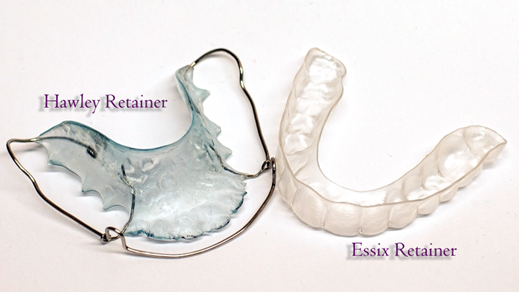
To ensure the longevity of your removable retainers, it is essential to keep them safe in a protective box when you’re not wearing them. Remember, your removable retainers play a crucial role in maintaining your new smile, so be sure to follow your orthodontist’s instructions carefully to achieve the best results.
How to take care of it:
Clean it regularly: Use a soft-bristled toothbrush and non-abrasive toothpaste or retainer cleaner to gently clean it. Soaking your retainer in a retainer cleaning solution can help remove any bacteria or debris that may have accumulated on it.
Handle with care: Don’t bend or twist it, and avoid exposing it to extreme temperatures.
Keep it in a case: When you’re not wearing your retainer, store it in a clean case.
Don’t wear it while eating or drinking:
Keep it away from pets:
Fixed retainer
A fixed retainer is a thin wire that is typically bonded to the back of your teeth, most commonly the front teeth, to hold them in place after orthodontic treatment.
Taking care of your fixed retainer is essential to ensure that it remains effective in maintaining your straightened teeth.
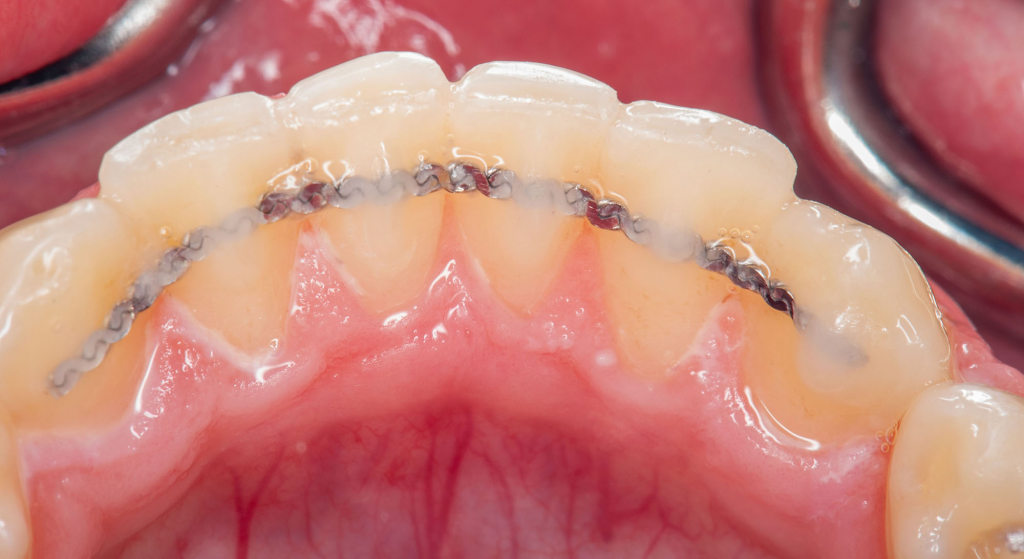
How to take care of your fixed retainer?
Brush and floss regularly:
Avoid hard, sticky, and chewy foods:
Wear a mouthguard during sports:
Visit your orthodontist regularly:
How long do I have to wear retainers for?
Your treatment instructions may vary according to your specific needs. Most orthodontists will instruct you to wear a retainer every night indefinitely after your braces have been removed. A lifelong commitment to a retainer may be intimidating, but it’s crucial to preserve the final results of your orthodontic treatment.
Don’t miss our future updates! Get Subscribed Today!